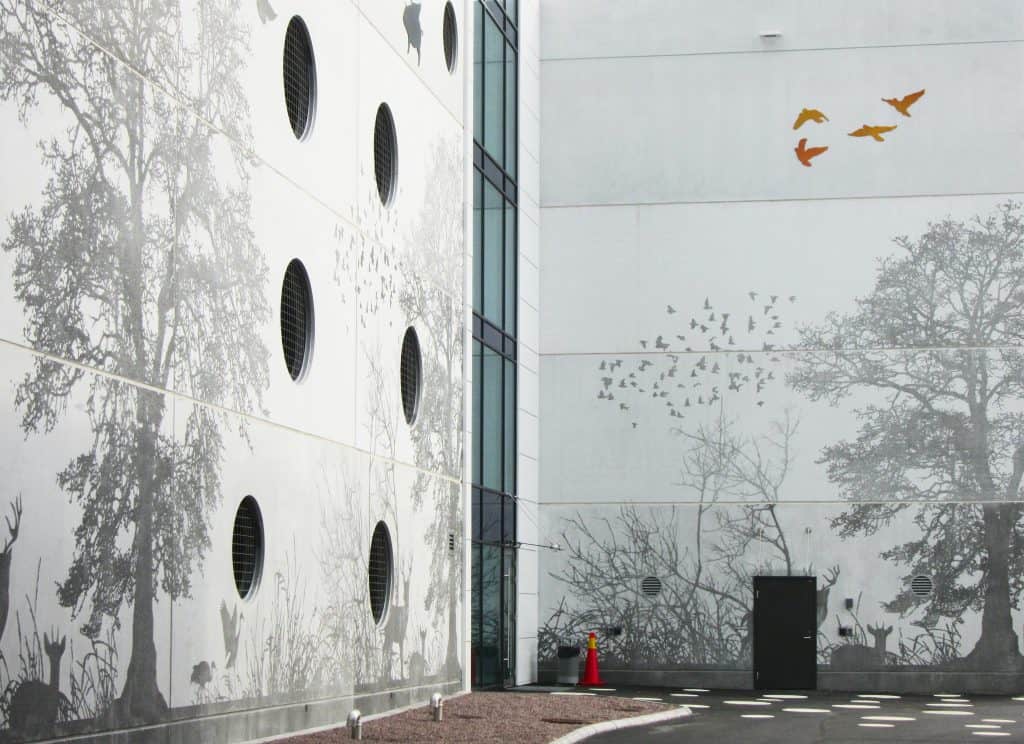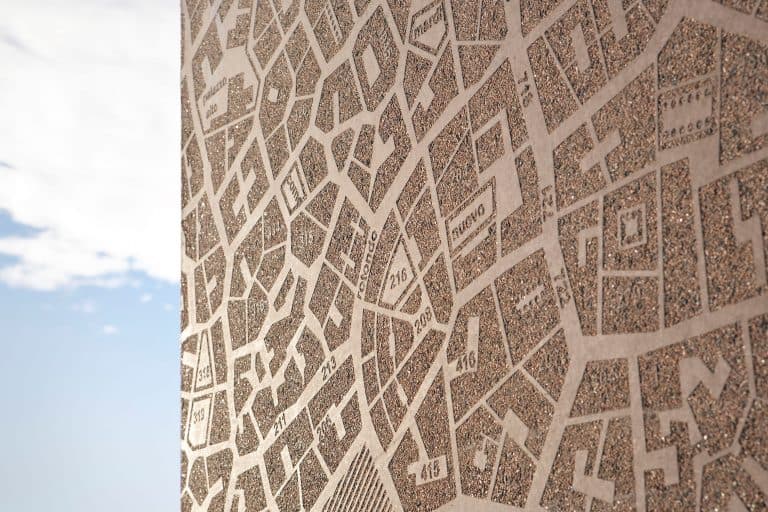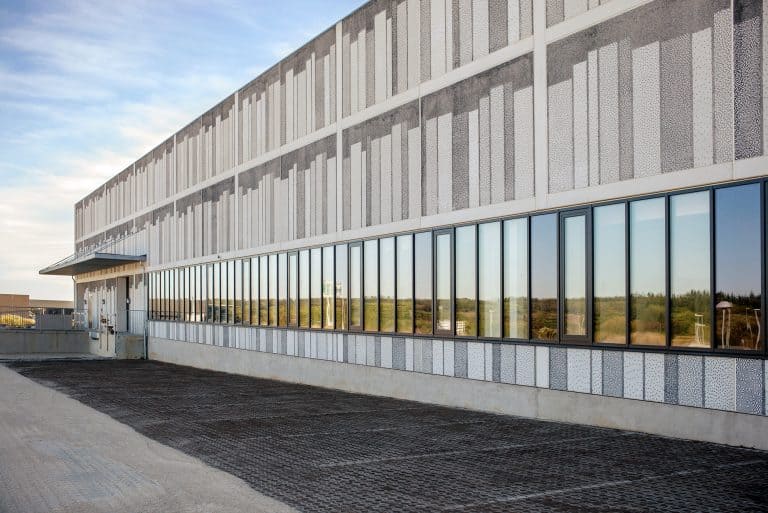Inspirational 3D effects with 2D techniques

It looks three-dimensional, but isn’t. Graphic concrete is a combination of exposed aggregate and fair face. A precast concrete façade manufactured in this way is 100 percent concrete, which makes it virtually maintenance free.
It looks three-dimensional, but isn’t. Graphic concrete is a combination of exposed aggregate and fair face. A precast concrete façade manufactured in this way is 100 percent concrete, which makes it virtually maintenance free.
Finland-based Graphic Concrete manufactures a product known as graphic concrete and sells it all over the world. Graphic concrete enables a vast variety of visually creative patterns and images to be produced on prefabricated concrete surfaces. The patented technology is based on a thin membrane that has concrete surface retarder printed on it.

From membrane to façade
The production process of graphic concrete consists of five phases. First, the designer designs a unique pattern for a façade or selects a readymade pattern from Graphic Concrete’s collection. Graphic Concrete then prints the chosen patterns onto a single-use membrane. The patterned membrane can be up to 3.2 meters wide and hundreds of meters long. Membranes can be cut down or combined, so the size of the element is not an issue.
The membrane is sent to the concrete element manufacturer. In the factory, the membrane is placed on the bottom of a concrete element mould and the mould is filled with concrete. The next day, the membrane is removed from the concrete surface, and the element is washed with a high-pressure washer to reveal the image. The pattern results from the contrast between the fair face and the exposed aggregate surface. The final look depends on the aggregate and the cement colour.
Carefree, light, and tactile
The genius of the idea is that the final product is 100 percent concrete. It is cost-effective, since the surface is ready as such and doesn’t need cladding. Graphic concrete does not add any weight to the element because no extra materials are needed to create the surface. The concrete element surface is durable and easy to maintain.
“It is important to remember that graphic concrete does not affect the structure or durability of the concrete. It is just a means to make a partly exposed aggregate surface. It can be used for very different concrete products; from thick sandwich elements to thin fibre concrete panels, for large industrial façades or the finest interior design”, says Lena Weckström, Consulting Architect and Business Development Manager from Graphic Concrete.
The price of the product depends on the pattern. The more repetitive the pattern is, the less expensive the product will be.
“People seem to think that graphic concrete is expensive, since it looks distinguished. When a façade is designed sensibly, it is cost-effective. Our customer service and graphic support is free of charge. You can create pretty much anything with graphic concrete, be it wallpaper like patterns or printed works of art,” Weckström says.
The company has over 100 ready-made patterns in their collection for designers to choose from. The patterns can be customized and scaled to create unique results.

3D… or is it?
Graphic concrete can create impressive optical illusions of three-dimensional surfaces. Traditionally, 3D surfaces have been made with rubber moulds. But they can also be created by playing with raster images and screening methods.
“We can create darker and lighter shades that combine to make 2D surfaces look like 3D surfaces. The results can be very exciting. Graphic concrete is tactile in nature: people often want to touch it when they see the beautiful surface. You must stand quite close to the façade to see the how the illusion was created. In that sense, graphic concrete is a social, interactive and inspiring element in urban environments,” Weckström says.

“It is important to remember that graphic concrete does not affect the structure or durability of the concrete.”